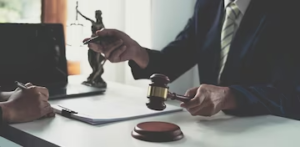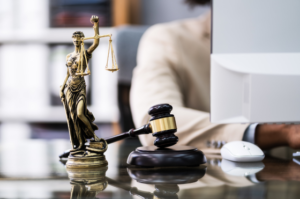Search Engine Land covers SEO news, trends, tips and best practices. It also offers guidance for brands that want to improve their search rankings and visibility.
SEO is a marketing technique that can keep working even after you stop paying for advertising. It’s the most important way to get organic search traffic to your website. Contact Rank Boss now!

On-page optimization is the process of improving the content and HTML source code of a website to increase its search engine ranking for relevant queries. It is distinct from off-page optimization, which is the practice of optimizing factors that occur outside of the website (for example, backlinks).
On-page SEO can be broken down into several steps, including keyword research, title tag optimization, meta description optimization, and internal link structure optimization. These steps are largely under your control and can be performed with a variety of tools. These tools can help you improve your rankings and drive more traffic to your site.
One of the most important aspects of on-page optimization is keyword research. This is because the keywords you choose to target will determine what search queries your webpages rank for. It is also important to consider the competition for these keywords when deciding which ones to target. This will allow you to focus your efforts on the keywords with the highest potential for a strong ROI.
Once you have determined which keywords to target, it’s time to start optimizing your pages. Title tags are an important part of on-page optimization, and they should include the primary keyword you’re targeting. However, it’s important to avoid over-optimizing your titles, as this can have a negative impact on your rankings.
In addition to title tags, on-page optimization also includes meta descriptions and URLs. These are important for ensuring that your web pages are visible to search engines and providing users with helpful information about the page. They are also an excellent way to attract clicks and increase organic traffic.
While on-page optimization has changed a lot over the years, there are still some basic steps that every website should follow. These include focusing on keyword-rich title tags and writing clear, compelling meta descriptions. In addition, it’s important to use internal links to other pages on your site when possible. This will help the user find what they’re looking for without going on a wild goose chase.
Content strategy
A well-executed content strategy is vital for generating leads in a competitive online landscape. With 93% of online experiences beginning with a search engine, ranking high on SERPs is crucial for your brand. Incorporating SEO into your content strategy ensures that you are targeting the right keywords and delivering value to users.
A successful SEO content strategy starts with understanding your audience. This requires conducting thorough research into your audience’s demographics, needs and challenges. Then, create a persona based on these findings to guide your content efforts. This will help you craft content that resonates with your target audience and aligns with your goals.
It’s also important to understand the intent behind a user’s search query. This information will allow you to target the most relevant keywords for your audience and create content that is more likely to rank highly on SERPs. A tool like Semrush can help you identify the underlying intent of a keyword. You can also learn a lot about the intent of your competitors by studying their SERPs.
Once you have a clear understanding of your audience and the keywords you want to target, it’s time to start planning your actual content. You can use this content to achieve a variety of marketing goals, from driving traffic to building brand awareness. A strong content strategy can also increase your organic search visibility.
Whether you’re creating blog posts, infographics, videos or any other type of content, it’s essential to know how to make your content work for you. A good SEO content strategy will incorporate all aspects of content production to ensure that your content is optimized for search engines.
A well-executed SEO content strategy is key to achieving your business goals. It combines keyword research, audience research, content ideation, an editorial calendar, content creation and on-page optimization. By following these steps, you’ll have a solid foundation to drive traffic and conversions to your website. Remember to keep up with SEO trends and updates, so your content is always on top of its game. By staying current, you can ensure that your content meets and exceeds the expectations of your target audience.
Link building
Link building is a critical part of SEO services that helps search engines find and rank your website for relevant searches. It involves getting other websites to create links to your website and promoting your content to increase the number of backlinks. There are several techniques for doing this, including guest blogging, submitting your site to directories, and creating high-quality content. However, the most effective strategy for securing high-quality, relevant backlinks is utilizing proven methods that build links naturally and avoid spamming or using other manipulative tactics (also known as black-hat SEO).
To get started, you need to perform a niche analysis. This process identifies your business’s goals and performance as well as the opportunities and communities within your niche. It includes keyword research, competitor analysis, and linkable asset analysis. You can use tools like Google Analytics and Ahrefs to analyze your competitors’ keywords, URL rating, and domain rating. This will help you determine whether the competition is worth pursuing and which pages are likely to succeed on search engines.
The goal of a successful link building strategy is to gain new visitors to your website by providing helpful and valuable information. A successful site will be rewarded by a higher ranking in search engine results pages, which leads to more traffic and conversions. However, it is important to understand that not all links are created equal. Search engines value links from reputable sources and ignore those that are illegitimate or spammy. Moreover, link building should always feel natural and be done to add value to the internet.
In the past, many SEOs focused on gaining as many links as possible, which led to a lot of spammy and low-quality websites being ranked highly in search engine results. As a result, search engines have now started to discount the value of certain links. They now look at the number of referring domains, which is the number of unique websites that are linking to a page.
Generally, it is not possible to build links directly to a product or service page because these pages are typically transactional in nature and only capture one type of search traffic (purchase intent). Instead, you can build links to your “money” pages, which are the non-product or service pages on your website that offer something of value to your target audience.
Social media
Social media is a digital platform that facilitates the creation and sharing of content with a wide audience. Its popularity has made it a key tool for marketers, and it’s essential to understand how it relates to SEO. There are several ways that social media can help SEO, including enhancing the visibility of content and boosting engagement. Social media also provides an opportunity to build a strong brand voice, which can help with search engine optimization.
The use of social media for marketing is a crucial strategy that should be part of any company’s digital marketing strategy. This includes establishing a presence on major platforms, such as Facebook, Instagram, Snapchat, and TikTok. By using these platforms, companies can increase the visibility of their products and services, generate leads, and boost traffic to their websites. However, it’s important to remember that not all social media platforms are created equal. Some have more users than others, and some have different functionality. Choosing the right social media platform for your business depends on the demographics of your target market and your desired results.
Moreover, using social media for SEO can improve your search engine rankings and boost your organic reach. The key to achieving these goals is creating quality content and optimizing your social media profiles and posts. To achieve this, start by tracking your key metrics and monitoring social media trends. Then, create a content plan that aligns with your business objectives. Once you’ve established a solid foundation, you can begin to see real results.
In addition to improving your search engine rankings, a social media strategy can also boost your local SEO. This is especially true if you use local keywords in your social media posts and optimize your profile information. It’s also helpful to include your business’s website address in your profile information.
SEO and SEM are two sides of the same coin – both are methods for driving traffic to your site. SEM is a term used to describe the process of using paid ads to promote your business on search engines, and it’s often combined with SEO to form a comprehensive marketing strategy.


